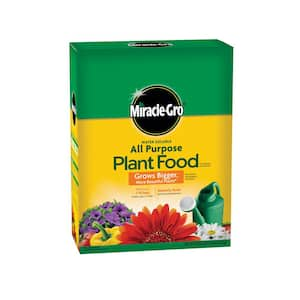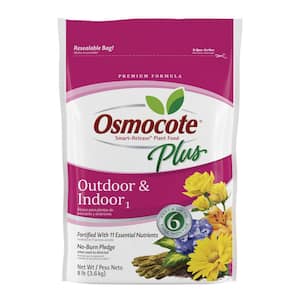Questions and Answers for Osmocote Smart-Release 8 lb. Indoor and Outdoor Plant Food
- Contains 11 essential nutrients
- Formulated for virtually all plants, in all conditions
- A single application will keep your plants fed for up to 6 months
Questions & Answers
30Questions
Q:What is the guaranteed analysis of macro and micronutrients in Osmocote Plus Plant Fertilizer?
by|May 21, 2023
1 Answer
Q:Is this the correct fertilizer for outdoor satsuma citrus trees?
by|Mar 25, 2023
1 Answer
Q:Is Osmocote Plus manufactured by ICL or Scotts Co?
I found Osmocote Plus in a 50 lb bag at the following website:
https://www.growwithosmocote.com/
by|Mar 17, 2023
1 Answer
Q:Can this be used on pine trees
by|Mar 11, 2023
1 Answer
Q:What kind of soil do I need for a plant that I watered once a week and pot dose not have hole.
by|Jan 29, 2023
3 Answers
Q:Does it work well for azealas?
by|Feb 19, 2022
4 Answers
Q:Do the pellets fully desolve in the dirt. I have seen in some reviews that some users say that it leaves a little plastic ball in the soil.
by|Apr 17, 2021
7 Answers
Q:Will the granules eventually dissolve?
by|Dec 16, 2020
6 Answers


























